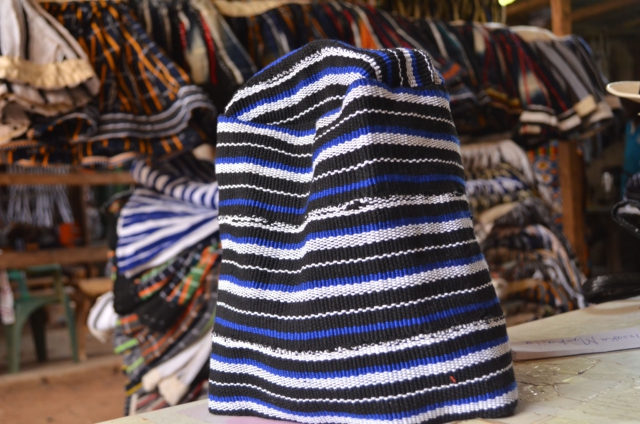Many Ghanaians would normally wear the locally – made smock [the 'fugu' or 'batakari'] with a hat made to match.
But some do not probably know that the way one chooses to wear that hat, communicates a certain message in traditional circles, especially in the northern parts of the country.
You could actually get into trouble with the chiefs or a spiritually – fortified person in the community, depending on the way you choose to fold the topmost part of the hat that usually accompanies the fugu.
JoyNews Upper East Region Correspondent, Albert Sore visited the fugu market in Bolgatanga to get a better explanation of the various meanings portrayed by the different styles of wearing the fugu hat.
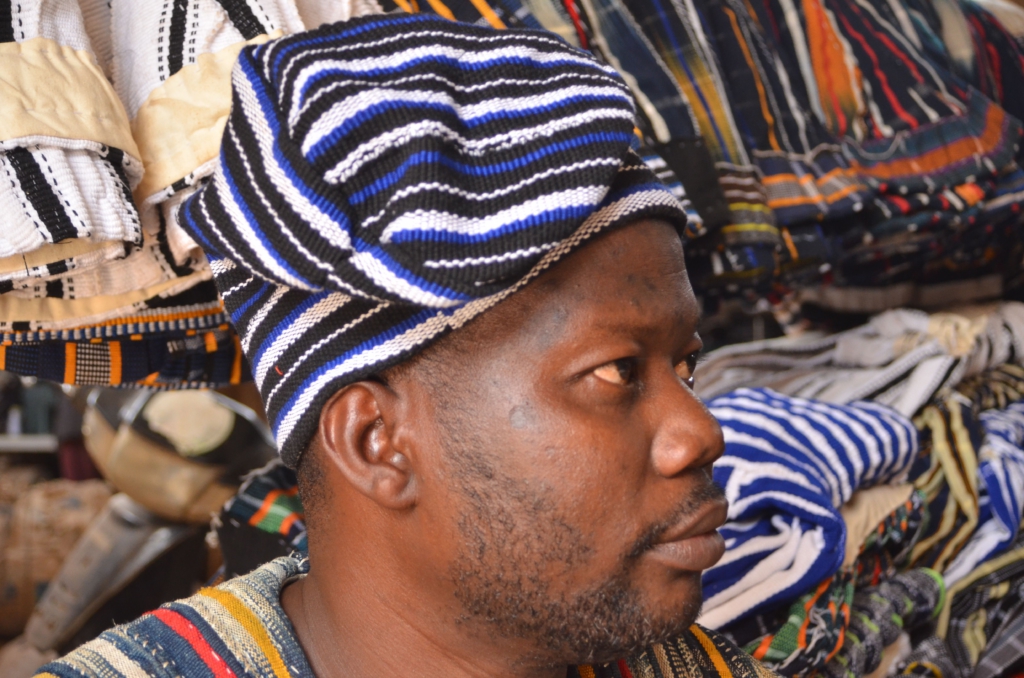
The hat is normally sewn with the same fabric used to make the smock or a different fabric altogether.
It is flexible and goes on to the head of the wearer in the same manner a snow hat does.
Isaaka Munkaila, one of the traders who has been dealing in smocks for the last 25 years says the color and fabric for the hats are usually determined by the customer upon an order. However, as a seasoned smock designer, he knows the expectations of the customers generally and so makes the hats for stock, just as he does with the smocks.
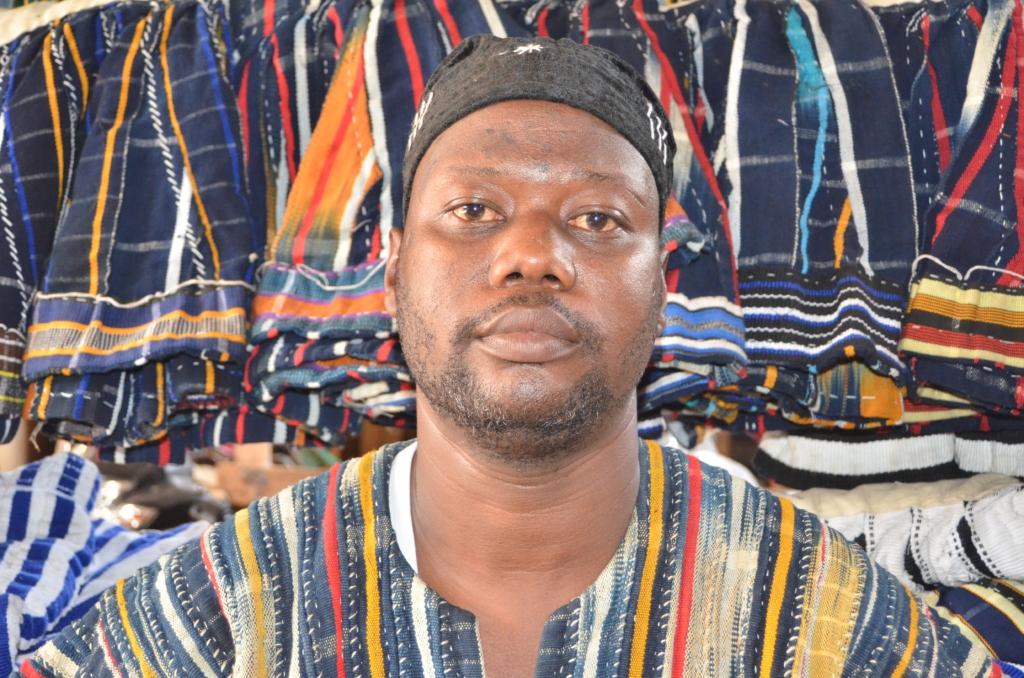
“Some people want the color of the hat to be same as their smock. Others want a different color and material for the hat. It all depends what the person [who is buying] prefers”, Munkaila says.
For the main purpose of our visit, Munkaila then proceeds to explain the different meanings portrayed when the topmost part of the hat is folded towards each side of the head.
Folding the top of the fugu hat to the back of the head: What it implies
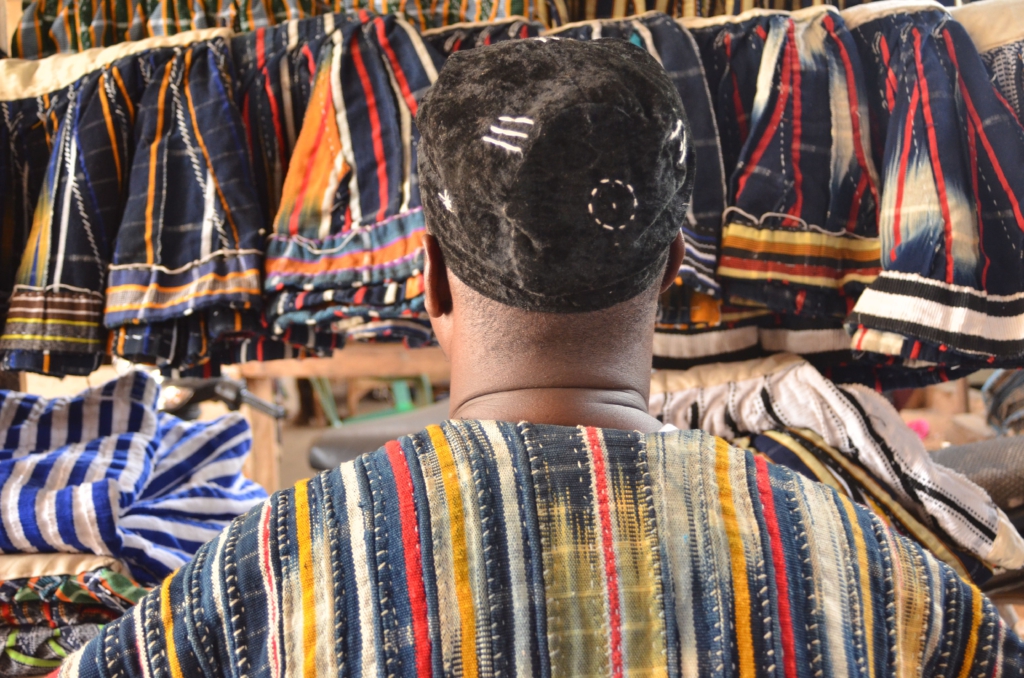
First, Munkaila puts on a black hat decorated with white thread. [Take note that the hat is similar to a snow hat]
He then folds the topmost part of the hat to the back of his head.
“This is how the chiefs normally wear their fugu hat”, he says
“When they wear it like that, what they are saying is that they have a lot of followers and they are heads of communities”, Munkaila explains.
According to him, one who is not chief could get into trouble if he wears the fugu hat in this same fashion in the presence of chiefs.
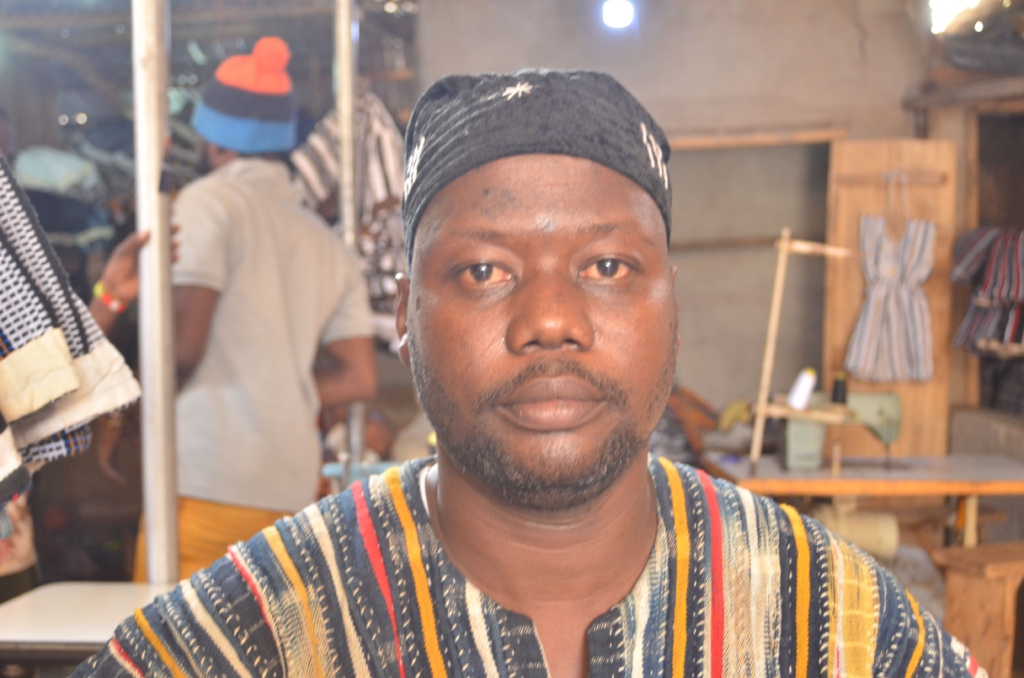
“When you go to place where there are chiefs present or you go to a chief’s palace and you wear the hat the same way the chiefs wear theirs, you are [indirectly] telling them that you are one of them”, he says adding; “And if you are not one of them, there will be a lot of implications”.
Munkaila says one could end up paying a huge fine for committing the abomination.
“Normally, there are things they will ask you to pay. It can be a goat, sheep or even a cow, depending on how seriously the chief will take the issue”.
To corroborate what Munkaila tells us, we speak to Naab Sierig Soore Sobil IV, the divisional chief of the Pelungu Traditional Area in the Nabdam district of the Upper East Region.
Naab Sobil IV confirms Munkaila’s explanation but says, how seriously the chiefs would take a matter like that, depends on the traditional area.
He explains that chiefs in the Upper East Region tend to be generally lenient on such matters and most of them would simply correct and/or scold any ordinary person who wears the hat like the chiefs are supposed to.
He explained further that whether or not the chief will take it lightly depends on whether or not the chief beliefs that the offender is ignorant of the custom.
“For example, if someone from the south [of the country] comes to my palace and wears the hat like a chief, I may consider the fact that he is not from here and doesn’t know our custom. So, I may correct him and teach him how to wear it and the matter ends there”, he says.
“But if someone from this community who should know better does the same thing, even if I, the chief wants to let it go, the [council of] elders will recommend sanctions to serve as a deterrent”, Naab Sobil IV adds.
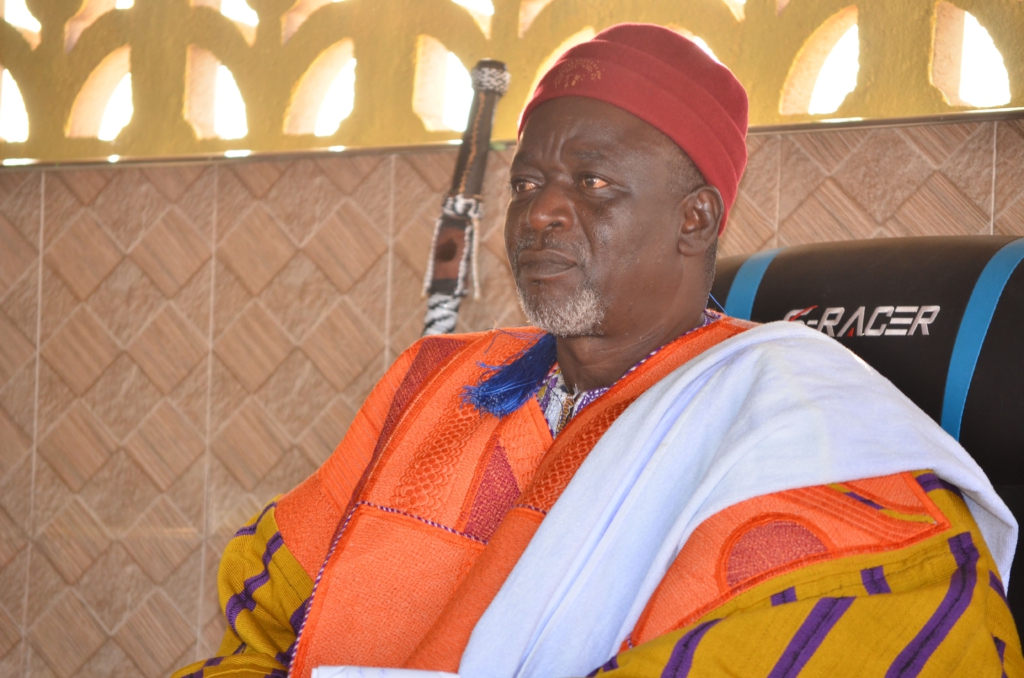
He also indicated that in the Upper East Region, fines are generally small because the chiefs understand the poverty situation and that modern chiefs are far more lenient in terms punishments for offenses such as this because “the world is changing and it will appear too primitive to punish or fine people for the least mistakes”.
Naab Sobil IV says he believes however, that in the Northern Region, the chiefs would be stricter because the chieftaincy institution there is older and customs and traditional laws are more cast in stone.
Leaving the top of the fugu hat pointed to the sky: What it implies
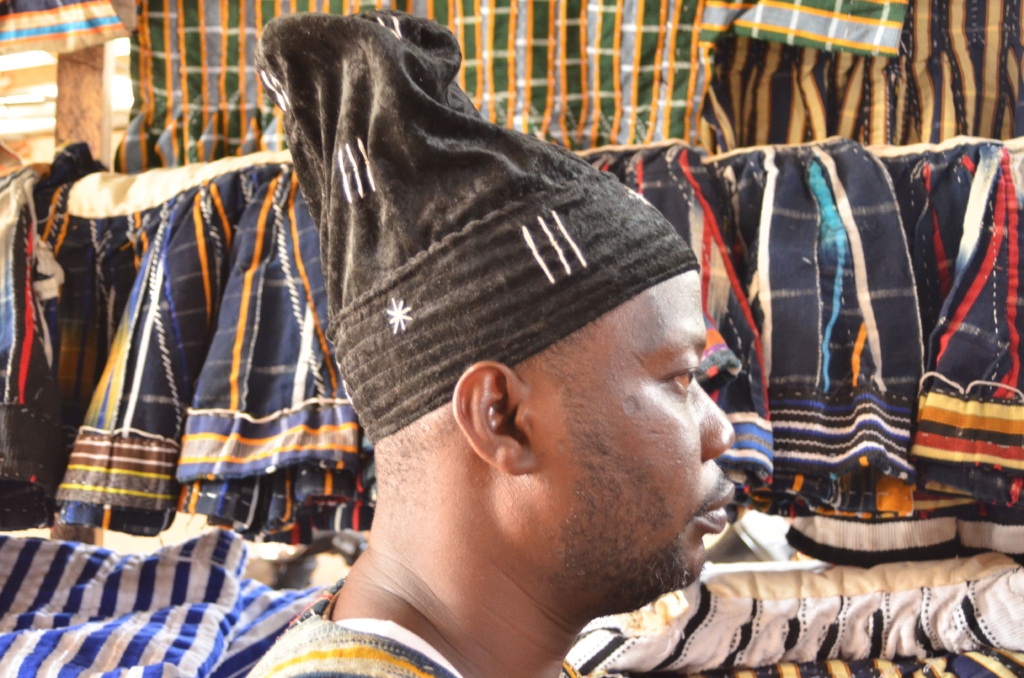
Munkaila stretches the topmost part of his fugu hat so it points to the sky.
“For laymen like us, we can wear the hat this way”, he says.
He then explains; “If you leave it this way, you are only acknowledging the presence of God everywhere you go so there is no problem”
Folding the top of the fugu hat to the left or right side of the head: What it implies
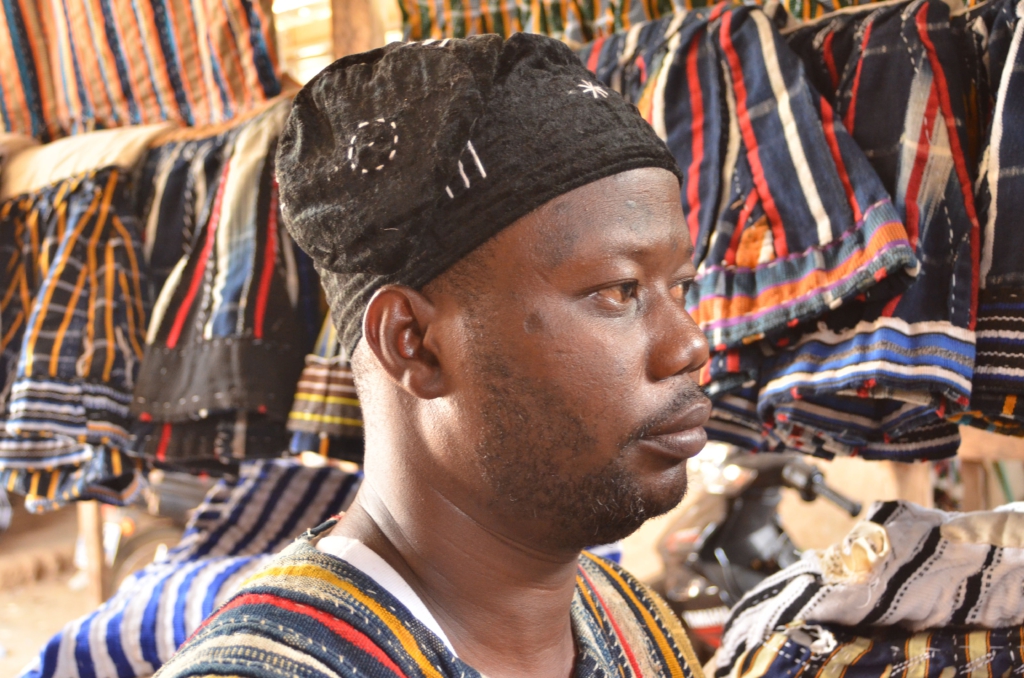
Again, Munkaila folds the topmost part of the fugu hat to the right side of his head and explains; “When you wear it to the righthand side like this, it literally means you belong with everybody whether old or young; you are friends with everybody”.
“It is the same meaning when you fold it to the left”, Munkaila adds.
He says for the ordinary person, these are also ways to wear it without stirring any controversy or misunderstandings with anyone.
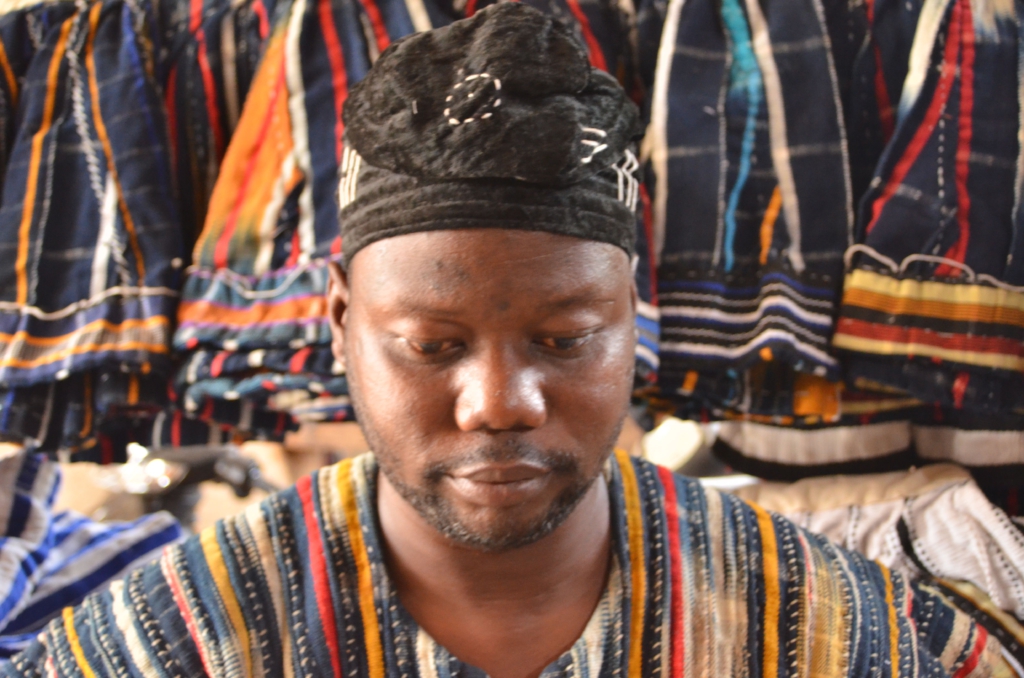
Folding the top of the fugu hat onto the forehead: What it implies
Finally, Munkaila folds the topmost part of the fugu hat flat onto his forehead. This style of wearing it, he explains, is only reserved for spiritually powerful people within the traditional society.
“So, if you are spiritually weak and you don’t have a lot of juju, you don’t venture to wear the hat this way”, he says.
He further explains; “If you not spiritually strong and you wear it this way, someone who is spiritually strong might see you and decide to test his juju [powers] on you to see how strong you are. Therefore, you don’t wear it this way if you don’t have [traditional] spiritual powers”
Naba Sobil IV agrees with the various meanings given by Munkaila but adds that powerful chiefs such as paramount chiefs may also choose to wear the hat, just as the spiritually powerful people would do.
There is no known record of anyone who has ever been spiritually harmed because they wore the fugu hat the way they should not have but chiefs have been known to scold or even sanction their subjects for wearing the hat as chiefs would do.
People in the Northern parts of Ghana generally know about these meanings that come with wearing the hat because it is part of the customs so chances that anyone would fall a victim for wearing the hat wrongly in these parts are very slim.
Whichever way you look at this, traditional beliefs and connotations are integral to the Ghanaian culture and will exist for a long time to come.
Latest Stories
-
You can’t use context of past elections to determine what will happen in December polls- Alan
21 mins -
2024 poll: Don’t vote for Mahama; he has nothing new to offer – Afenyo-Markin
39 mins -
Saglemi Housing Project: Government promises transparency in divestiture
59 mins -
I don’t want to deceive myself as a politician – Alan Kyerematen
1 hour -
We will continue to provide more financing for Ghana despite not reaching agreement with Eurobond holders – IMF
1 hour -
Economic outlook for Sub-Saharan Africa including Ghana gradually improving – IMF
2 hours -
Ghana’s inflation to average 11.5% in 2025; policy rate expected to reduce sharply – IMF
2 hours -
Let’s prioritize research quality in higher education institutions for industrial growth-Prof. Nathaniel Boso
9 hours -
Herman Suede is set to release ‘How Dare You’ on April 24
13 hours -
Heal KATH: Kuapa Kokoo, Association of Garages donate 120k to support project
13 hours -
KNUST signs MOU with Valco Trust Fund, Bekwai Municipal Hospital to build student hostel
14 hours -
The influence Ronaldo has on people, Cadman Yamoah will have same on the next generation – Coach Goodwin
14 hours -
Gender Advocate Emelia Naa Ayeley Aryee Wins prestigious Merck Foundation Awards
15 hours -
South Africa bursary scandal suspects granted bail
16 hours -
Ecobank successfully repays $500m Eurobond due April 18
16 hours

